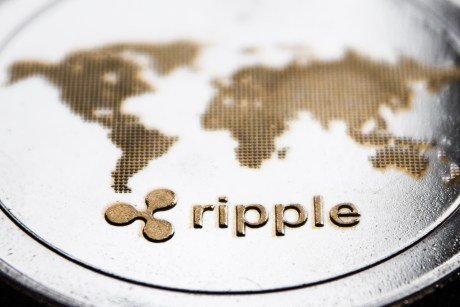Ripple Labs is approaching a pivotal turning point with a potential initial public offering (IPO), a development that has been speculated about for some time. An IPO could be a transformative moment reminiscent of Amazon.com Inc.’s initial public offering (IPO) in 1997. Jake Claver, a Qualified Family Office Professional (QFOP), articulates this perspective in a thread on X, suggesting that Ripple’s strategic maneuvers could mirror the trajectory that propelled Amazon into a global tech behemoth.
According to Claver, the company has cemented its position within the blockchain ecosystem through its robust cross-border payment solutions, currently supporting over 300 financial institutions worldwide. The company’s utilization of XRP, enables transactions that are markedly faster and more cost-effective compared to those processed via the Society for Worldwide Interbank Financial Telecommunication (SWIFT) network. Claver emphasizes, “This positions Ripple as a faster, more transparent SWIFT 2.0.”
Despite these accomplishments, Ripple has navigated substantial challenges, most notably its legal battle with the US Securities and Exchange Commission (SEC). However, recent court rulings have favored Ripple, potentially clearing the path for larger opportunities, including a public offering. Claver notes, “The recent court rulings in Ripple’s favor could open doors to bigger opportunities, like going public.”
Why Ripple Is Like Amazon In 1997
Drawing a parallel to Amazon’s evolution, Claver observed, “Just as Amazon was known as an online bookstore before its IPO, Ripple is recognized for its blockchain solutions. But there’s potential for much more.” He further elaborated, “When Amazon went public, it raised $54 million, enabling expansion into new markets.” Ripple also stands to unlock potentially massive growth opportunities through a public listing.
Ripple’s strategic acquisitions, including that of Metaco—now rebranded as Ripple Custody—demonstrate its intent to broaden its market presence. Claver remarks, “With acquisitions like Metaco, now Ripple Custody, they’re already showing an interest in expanding their reach. This could be just the beginning.”
The potential implications of Ripple opting for an Initial Public Offering (IPO) or a direct listing are multifaceted. Claver outlines that an IPO would provide Ripple with fresh capital, enabling rapid scaling and entry into new markets such as tokenized securities, real-world assets (RWAs), and decentralized finance (DeFi). He states, “An IPO would provide Ripple with fresh capital, enabling them to scale quickly and enter new markets like tokenized securities, RWAs, or DeFi.”
Moreover, the influx of capital from an IPO could facilitate further acquisitions, allowing the company to expand its offerings and strengthen its portfolio. Claver draws a direct comparison to Amazon’s acquisitions, noting, “Ripple could use IPO funds to acquire other companies and expand its offerings. Similar to Amazon’s acquisitions of Whole Foods and Twitch, Ripple could break into new markets and strengthen its portfolio.”
Enhanced financial resources would also empower Ripple to accelerate its research and development efforts. Claver explains, “More resources would allow Ripple to accelerate R&D, improve the XRP Ledger, and explore new applications like smart contracts, tokenized real-world assets, and central bank digital currencies (CBDCs).”
Claver differentiates between the two primary routes to going public: an IPO and a direct listing. He elaborated, “An IPO involves issuing new shares to raise capital, typically underwritten by investment banks, but comes with costs like underwriting fees and regulatory requirements. In contrast, a direct listing does not involve issuing new shares; instead, existing shareholders sell their shares on the market. This method is generally less costly and quicker than an IPO.”
Given Ripple’s robust financial standing, with over $1.3 billion in cash reserves, Claver suggests that a direct listing might be a viable option. “Ripple could opt for a direct listing because it already has a strong balance sheet,” he states. “A direct listing provides transparency and avoids lockup periods that restrict insider sales in a traditional IPO.”
Beyond the financial mechanics, Claver underscores that going public serves as a legitimizing force for Ripple. He draws a parallel to Amazon’s IPO, stating, “Amazon’s IPO legitimized e-commerce. For Ripple, a public listing would legitimize its role in global finance, signaling to banks and regulators that it’s here to stay.”
The recent favorable legal rulings in Ripple’s case against the SEC have significantly bolstered its position, making the prospect of a public listing more feasible. Claver concludes, “Ripple is at a critical juncture, much like Amazon before its 1997 IPO. If Ripple follows a similar path, we could witness the rise of a new tech giant. Whether through an IPO or direct listing, this move could unlock significant growth for Ripple and the blockchain industry.”
At press time, XRP traded at $0.5478.
This articles is written by : Fady Askharoun Samy Askharoun
All Rights Reserved to Amznusa www.amznusa.com
Why Amznusa?
AMZNUSA is a dynamic website that focuses on three primary categories: Technology, e-commerce and cryptocurrency news. It provides users with the latest updates and insights into online retail trends and the rapidly evolving world of digital currencies, helping visitors stay informed about both markets.
